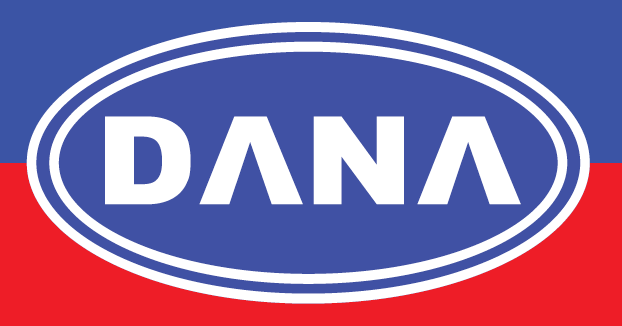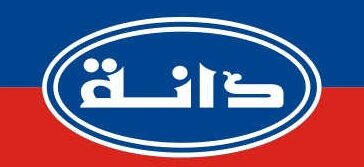Energy efficiency for Cold Storage rooms with BMS and monitoring systems
Most perishable foods require refrigeration across the world, and electricity is a key part of any cold storage business’s operating costs. This means that, after personnel, energy is the second most expensive component of any cold storage facility. And businesses all across the world are under pressure to cut costs and save energy without sacrificing service quality.
We’ll talk about energy management for cold storages in this article. It proposes methods for gathering and analysing data on energy, asset performance, product, and operations in order to develop energy-saving strategies that, when implemented, would improve cost, performance, and energy efficiency.
Key challenges in energy management for cold storages
-
Lack of centralised visibility:
Today’s cold storages are designed primarily for availability (business readiness) and service quality, rather than for energy efficiency. There is no one perspective of energy usage, asset performance, or even operations. The information acquired by Supervisory Control and Data Acquisition (SCADA) or PLC systems deployed is likewise extremely site-specific, and this information is not shared between locations. As a result, no one from the headquarters or a central team could conduct a multi-site or multi-site, multi-asset comparison to identify inefficiencies or communicate best practises across sites.
-
Staff Costs
Staff expenses make up a large amount of a cold storage’s operational costs. As a result, having a specialised energy management team at each location becomes untenable for any cold storage organisation. Each site’s operations team is charged with “running” the activities, not necessarily “saving energy.” This results in considerable waste, such as overcooling (i.e. pessimistic control point settings) or higher asset use, both of which add up to large expenditures.
-
Expert Judgment vs. Data-driven Analytics
Cold storage companies rely on professional advice when it comes to operations, asset optimization, preventive maintenance scheduling, and facility tune-ups. As a result, a lot of work and opportunities are missed since fewer data points are used to make those decisions. There is no link between operational data, asset key performance indicators and their volatility over time, and external influencing factors such as weather, product type, product input temperature, geographic location, and loading/unloading patterns.
Building Management System For Boosting Energy Efficiency
A Building Management System (BMS) is a computer-based system that controls and monitors equipment in buildings, such as air conditioning, heating, ventilation, lighting, power systems, security devices, Internet of Things sensors, and energy and gas metres.
A building management system (BMS) integrates HVAC and other building functions into a single system. They should, in theory, be able to consolidate tasks and make data visualisation simple via a user interface or console.
BMS has devolved into a mess of incompatible pieces and opacity. Although their appropriate use saves 30% on energy expenditures, they are only found in 15% of large and affluent buildings because to their high cost and complexity.
Data Analytics-based Energy Savings
- Data analytics reveals the intricacies of crucial processes. When Data Analytics is combined with knowledge in Energy Management and Refrigeration Systems, Energy Conservation Levers/Strategies may be identified. Here are several examples:
Energy Consumption Analysis
The refrigeration system’s energy usage may be profiled by first separating the refrigeration system’s consumption from the entire plant load. After that, a link between the absolute energy consumption (kWh) and operational variables such as product input temperature, amount stored, and % utilisation of the warehouse’s overall capacity would assist arrive at a KPI like kWh/MT/m3/year.
- Weather Influence on Energy Consumption
The refrigeration system’s energy usage may be profiled by first separating the refrigeration system’s consumption from the entire plant load. After that, a link between the absolute energy consumption (kWh) and operational variables such as product input temperature, amount stored, and % utilisation of the warehouse’s overall capacity would assist arrive at a KPI like kWh/MT/m3/year.
- Improving Chiller Operations by Analyzing Chiller Parameters
It is possible to uncover strategies to fine-tune chiller operations by collecting critical chiller operating metrics. To get the best energy footprint for the chillers, tactics including capacity regulation and compressor sequencing are used.
About us:
Established in 2001,DANA WATER HEATERS & COOLERS FACTORY LLC,is one of the manufacturing concerns of prestiguous DANA GROUP [www.danagroups.com] . Since it’s inception the company has endeavored to provide premium quality heating,cooling & refrigeration solutions to it’s valuable clients.
With it’s head office situated within 10 minutes from Dubai International Airport,and it’s manufacturing faciltiies in Al Quoz Industrial Area 1 (Dubai) & Al Jurf Industrial Area (Ajman),we are fully equipped to meet the demands of the GCC,Gulf & Arab markets.
Our firm is an experienced Manufacturer, Exporter, and Supplier of Industrial Air Cooled Water Chillers,Tank Water Cooling System(Tank Water Chiller),Stainless Steel Drinking Coolers,Heaters,Swimming Pool Heat Pumps & Cold Room Refrigeration Solutions from Dubai, U.A.E. Our Units are designed to be highly efficient, consume less power and deliver reliable output. We are capable of delivering any order with reliability,on-time delivery & prompt after sales service. Dana Group has been catering to Dairy chiller and coldroom industry, Poultry Farm chiller and coldrooms, Livestock production coldrooms and water chillers, Hydroponic farm water chillers and coldrooms.
Customers can obtain our exclusive collection of heating & cooling solutions at modest rates. The Products we offer are acclaimed for their elegant designs, good spaciousness, and excellent finish. As a reliable Manufacturer, Exporter, and Supplier from Dubai, U.A.E., we ensure customers get a quality assured product. Hence, our quality auditors check our products on various parameters before the final delivery.Our products are exported to Africa,Oman (Ibri, Salalah, Muscat, Sohar, Nizwa, Barka),Bahrain,Saudi Arabia,Kuwait,Qatar ,Jordan and other neighboring Gulf/GCC Countries .We have our dedicated installation & after sales team to cover installations across UAE( i,e Dubai,Ajman,Sharjah,Al Ain ,Abu Dhabi,Fujairah,Ras Al Khaimah,UAQ) and GCC countries including Oman (Salalah, Muscat, Sohar, Nizwa, Barka, Ibri)
Dana Water Heaters And Coolers Factory LLC
Contact Person : Mr. Ankur Singh
Address :-Head Office – Suite No 405-406,B-Block Centurion Star Bldg,Opp Deira City Center, Dubai – 40743, United Arab Emirates
Factory – Plot # 369-B166,Al Quoz Industrial Area #4,Dubai , UAE
Contact No. : +971-4-2217273 (Landline)
Email : info@danagroups.com / info@danawatercoolers.com





